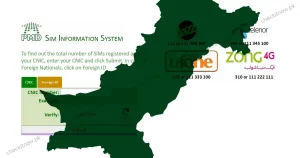Dedicated driver and maid rooms which have bathrooms with an ensuite are popular and considerate.
Drop-Off, Parking along with Service Access
Covered parking with integrated EV charging is quickly becoming standard. Set up a secure drop-off and an invisible service gate to maintain a smooth flow of daily activities without disrupting the main façade.
Materials & Finishes That thrive through the Desert
Exterior: Stone, Stucco, Porcelain, High-Performance Coatings
Seek out UV-stable finishes or low-maintenance claddings. Porcelain blocks resist staining and heat. Natural stone, such as travertine, limestone, basalt adds a certain gravitas to your home if properly sealed. High-performance elastomeric paints handle expansion and ensure that facades remain crisp.
Interior: Marble, Large-Format Porcelain, Timber Accents
Large-format tiles provide fewer joints and give a cleaner looking, cooler style. Quartz or crafted marble works well in kitchens. Timber adds warmth. Consider using engineered products with strong cores that can stand up to AC cycles. In wet environments, choose epoxy grouts and anti-slip ratings.
Acoustics, Lighting as well as Thermal Comfort
Daylighting without Heat Gain
Layer your glazing in a smart way: low-E triple or double glazing, exterior shading and recessed windows provide views while not exposing the interiors to heat. Skylight wells, light shelves and reflective surfaces reflect soft light deep into rooms.
Acoustic Zoning to create a peaceful and tranquil interior
Stone and tile can amplify the sound. Therefore, you can add acoustic panels disguised as slatted timber, fabrics walls, or ceiling “clouds”. Utilize soft furnishings in the living and majlis areas. keep noisy rooms (gym and playrooms, as well as the homes cinema) off from bedrooms.
Smart Home and Sustainable Upgrades
Solar, Insulation along with Water Efficiency
A well-insulated building envelope can reduce AC load by a significant amount. Pair with solar PV on flat roofs for hot solar water, and greywater reuse for irrigation. Plant a landscape with native or drought-tolerant trees that can reduce the need for water.
Home Automation Security, AV & Home Automation
From proximity-based cooling to blind controls and glass tinting, smart systems in Dubai are about being comfortable and efficient. Integrate access control and CCTV on large villas. integrate intercoms, as well as Wi-Fi networked for even coverage (indoor and out).
Outdoor Living Done Right
Pools, Pergolas, and Outdoor Kitchens
A swimming pool is not just a rectangle. You can think about baja shelves as well as integrated spas and in-pool loungers. Pergolas with adjustable louvers provide shade that breaths. Outdoor kitchens should have kitchen sinks, prep counters and storage space, as well as a built-in grill, and a nearby dining area with fans and misting if needed.
Landscape, Irrigation & Microclimates
Make use of trees to provide shade in the afternoon on buildings and play areas. The combination of hardscape (porcelain pavers and textured concrete) with green pockets for cooling heat. Drip irrigation slows down evaporation. smart controllers are able to adapt to changing weather conditions.
Space Planning By Lifestyle
Entertainers’ Floor Plans
Prioritize flow in the foyer, formal living/majlis the dining room – terrace pool. A show kitchen with an unintentionally dirty kitchen makes the events looking stunning. You can also add a bar or a coffee station, and a powder room close to public areas.
Family-First Homes
Create a family living lounge close to the kitchen, with direct garden views. Bedrooms should be big enough with study areas. You could consider a basement suite with a separate room for children and an elders loft for activities in the second floor.
Work-From-Home Suites
Sound-isolated study spaces with built-in storage, natural lighting, and private terraces improve productive. A small meeting nook as well as a hidden green screen wall panel to make video calls.
Regulations, Approvals & Communities (High-Level Overview)
Always check local authority approvals, design guidelines for communities and plot coverage requirements before you fall over a property. Gated communities are able to have the ability to set height, facade, or standard boundary walls; coastal or golf communities might also include guidelines for view corridors. A seasoned architect or design-build firm can integrate drawings, submissions and inspections. They will also align aesthetics with compliance.
Timelines, Budgeting & Your Team
-
Team team: Architect, structural engineering, MEP and structural engineers. designer, landscape architect, QS (quantity surveyor) contractor Joinery specialist, pool/AV/security vendors.
-
Cost drivers The plot shape, soil conditions basement vs. slab-on ground, facade difficultness, imported building materials custom joinery and smart systems, along with landscaping scale.
-
Timeline Schematic design – authorities approvals Tender – construction handover and snagging. Prepare contingency plans for procurement of items that are special and for authority inspections.
Renovations vs. New Build in Dubai
Renovations are faster and less costly if the structure is sturdy. The most popular upgrades are open-plan living, new kitchens or facades with porcelain cladding, larger windows (with shading) and complete landscaping/pool overhauls. New constructions allow for optimal design, structural spans with huge glass and ideal back-of house logistics starting from day one.
Top Design Unfortunate Mistakes to Avoid
-
The sun angle is not being considered–leading to hot and sweltering rooms as well as growing AC costs.
-
Not defining insulation and glazing–comfort is affected in glass and it fogs.
-
Forgetting privacy layers–gardens and swimming pools feel open.
-
Skimping on storage and service areas–beautiful areas become cluttered.
-
Overcomplicating smart technology–choose reliable systems with local support.
-
Flat landscaping–missed opportunity to create shade pockets and to give visual depth.
-
There is no acoustic plan–hard finishes plus high volumes = echo chamber.
Conclusion
Dubai home designs succeed when it marries climate intelligence with awareness of the local culture and everyday ease. Start with privacy and orientation and then add the appropriate materials and shading before enhancing with thought-provoking design of outdoor living, interiors and intelligent technology. You can choose to go for minimalist, trendy, or Arabic-inspired, your winning formula is the identical: a design that flows and a shell that is functional, and details that create a pleasant daily experience.
FAQs
1.) What is the ideal size of villa best for families of four living in Dubai?
It depends on lifestyle the size of bedrooms. 4-5 bedrooms with a family lounge, study and kitchen that is dirty typically can be found in the 350-550 m2 range of living space. This includes outdoor living.
2) Which façade materials that are most durable in desert?
Porcelain claddings, well-sealed natural stones aluminum/UPVC system, and high-performance coatings. They are all resistant to heat, UV, and dust with minimal maintenance.
3) Do I have the ability to get strong natural light and not overheat?
Yes–use low-E glass, overhangs that are deep such as recessed windows and screens and light-redirecting equipment (light shelves rooflight wells). Use good insulation.
4) Are courtyards worth having it?
Absolutely. It improves cross-ventilation, makes a an inviting heart for the home, and adds a separate outdoor space that’s functional throughout the year with shade and landscaping.
5) Do I need a smart home system from the start?
Plan the network’s wiring and backbone early in design. You can make features phased, beginning on with AC control and shading, and add security, AV, and lighting scenes if needed.








